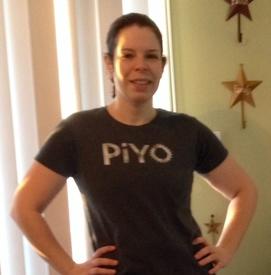Better to Run Farther or Faster?

hskrdoo
Posts: 7 Member
I recently started running on the treadmill again. Currently, I'm running at 5.5 mph for a little over thirty minutes, which is right at 3 miles total. My body has gotten really used to this speed so here is my question. Should I increase my speed (maybe to 6) and continue to run 3 miles or should I keep the same speed and just run farther? Or maybe a combo of the two? And just to note, I'm running to lose weight. I'm not really concerned with running a 5k or anything...
0
Replies
-
Its my understanding (keep in mind I am no expert!) that fat loss occurs at a lower heart rate, so I would guess that you should run at your current speed and add minutes if weight loss is your goal. Another thing that I do sometimes (because I get SO bored on the treadmill) is to increase my speed by .3 (from 5.5 to 5.8 for example) for 2 minutes, then bring it back down for two minutes. I alternate like that for a couple of miles, it seems to help pass the time better. Good luck!0
-
I am in a similar situation. My understanding is that long and slow burns fat, harder is good heart conditioning. I am extending my runs but still moving (really) slowly. Maybe we should do the slow runs to burn the fat and do an occasional shorter, faster one to mix it up.0
-
Its my understanding (keep in mind I am no expert!) that fat loss occurs at a lower heart rate, so I would guess that you should run at your current speed and add minutes if weight loss is your goal.
This isn't entirely correct, you burn more calories the harder you push yourself, that being said at the lower heart rate a higher % of calories are burned from fat, but you will still burn more fat calories by pushing yourself harder.
As an example say you burn 100 cals at low intensity and 60% cals are from fat that would be 60 cals of fat, but if for the same time you worked harder and burned 150 cals and 55% from fat which would be 82 cals from fat. Although the second is less fat % it still burns more fat calories in total. And the biggest determinant to loose weight is total caloric burn.
That being said I would suggest you increase the intensity (speed) and run for the same length of time, which would take you further than the 3 miles you do now, or incorporate HIIT training. Google HIIT to get an idea of how you can use it in your workouts.0 -
I am also running on the treadmill. When I feel my body getting used to the speed, I speed up...When I know that I can run longer, I add a minute. I started a month and a half ago at 5 MPH for about 15 minutes and now I am up to 36 minutes starting at 5.6 going all the way to 9 MPH!!! I don't stay at 9 MPH for long, 30 seconds at the most...but it really pushes my body and I feel awesome after.
So, if you feel like you can handle more, try increasing your speed and time....I usually start at 5.6---5 minutes, bump it up to 5.8 for 11 minutes, 6.0 for 5 minutes, and then just go from there. I try and set a goal for myself such as I want to be at 7.5 by the time I only have 2 minutes left so I can really push out those last 2 minutes.
Good luck!!0 -
Intervals! If you're not training for a race (or even if you were), intervals are supposed to really help the weight come off. I've read it several places. If your tready has an interval setting, you can use this. I wouldn't do intervals longer than 30 minutes though. That would be too much.0
-
I’ve read a few places how the “long slow run to burn more fat” has been blown out of proportion.
Running at a lower intensity burns calories at a slightly higher % of fat. BUT running at a higher intensity burns more overall calories and even though a lower % of those may be of fat, the total fat burned (more important) is higher.
So that being said there are several variations of workouts you can do to keep from being bored and get plenty of caloric burn without worrying which one is “best”
Tempo runs start slow for 10-15 minutes, pick up the pace for the next 10-15 minutes, then back it off again for the last 10-15.
Intervals, everyone know those
You can also go at a nice “easy” pace for most of your run, then pick up the pace to finish the last mile or 10 minutes of your run a little faster
Mix these 3 with the “same time higher intensity” and “longer time lower intensity” you already mentioned and you’ll have plenty of workouts to keep from getting bored.0 -
To make steady progress in your fitness level, you should include a variety of workouts in your routine. Improving your fitness level allows you to work harder, even on slower, steady days and thus burn more total calories (or help maintain a calorie burn rate if you are losing weight).
So, essentially, you want to do both. Increase your endurance for at one or two runs a week while keeping the intensity on the lower (55%-60% of HR reserve) side. But also add 1-2 runs where you either increase the speed (even if that shortens the overall time a little) or include some interval training (or both). The best way to increase your speed is to run faster. The best way to learn to run faster is in smaller chunks. In your typical 30 min run, that might mean running at a faster speed for 2 min out of every 5. Or you might try a "performance" run where, after a warm up, you try to maintain a higher speed for a fixed distance.
Keep in mind that a lot of people are using the term "interval training" these days, which means it has many meanings. Basically, interval training just means alternating periods of higher effort with periods of recovery. Depending on your overall goals, your abilities, or your goals for a particular workout, you can come up with many different types of interval training. The "work" interval can range from just a couple of tenths of a mph higher than your current speed to an all-out sprint; durations of work and recovery intervals are equally variable.0
This discussion has been closed.
Categories
- All Categories
- 1.4M Health, Wellness and Goals
- 398.1K Introduce Yourself
- 44.7K Getting Started
- 261K Health and Weight Loss
- 176.4K Food and Nutrition
- 47.7K Recipes
- 233K Fitness and Exercise
- 462 Sleep, Mindfulness and Overall Wellness
- 6.5K Goal: Maintaining Weight
- 8.7K Goal: Gaining Weight and Body Building
- 153.5K Motivation and Support
- 8.4K Challenges
- 1.4K Debate Club
- 96.5K Chit-Chat
- 2.6K Fun and Games
- 4.8K MyFitnessPal Information
- 18 News and Announcements
- 21 MyFitnessPal Academy
- 1.5K Feature Suggestions and Ideas
- 3.2K MyFitnessPal Tech Support Questions





